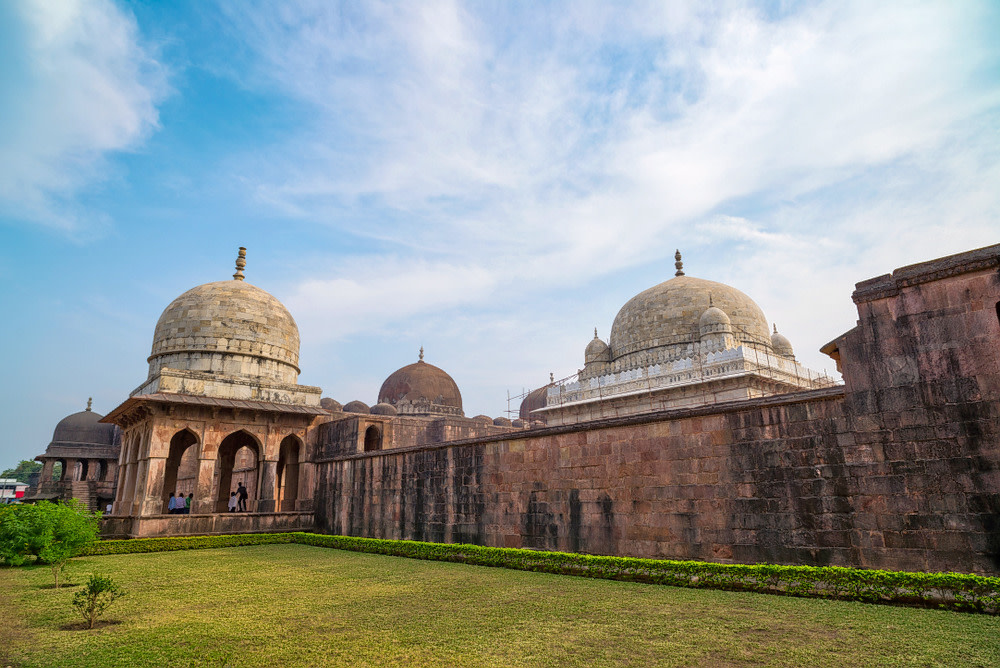
Built by Dilawar Khan in 1405 AD, this mosque is one of the earliest Islamic structures in Mandu. It dates back to an era when the influence of Hindu architecture was seen a lot on the buildings the Afghans were building. This expansive mosque, although in ruins, shows some remarkable wall paintings which have survived to this date. Dilawar Khan Ghori was a Pashtun[1] governor of the Malwa province of central India and later Sultan of the Malwa Sultanate during the decline of the Delhi Sultanate. He was appointed governor at Dhar in A.H. 793/C.E. 1390–91. Dilawar Khan took the title of 'Amid Sh?h D?'?d' and caused the khutba to be read in his name in A.H. 804/C.E. 1401–02. He passed his kingdom – the Malwa Sultanate – to his son Hoshang Shah upon his death in A.H. 809/C.E. 1406. Dilawar Khan was the follower of Firuz Shah Tughluq's son, Muhammad ibn Firuz, later known as Muhammad Shah. The court officials imprisoned him at Delhi for his support for the rebel prince. But many important provincial governors, such as Gujarat and various other important and powerful nobles of the court, supported the Prince's claim to the throne. After Timur's invasion in 1398, the same Prince, who was the then Sultan of Delhi, ran away from the capital and sought shelter, first in the Gujarat Sultanate, but receiving a less than enthusiastic response there, moved to the Malwa Sultanate. Dilawar Khan is said to have welcomed him with open arms and told him that his Sultanate and treasure were all for the Delhi Sultan's service.